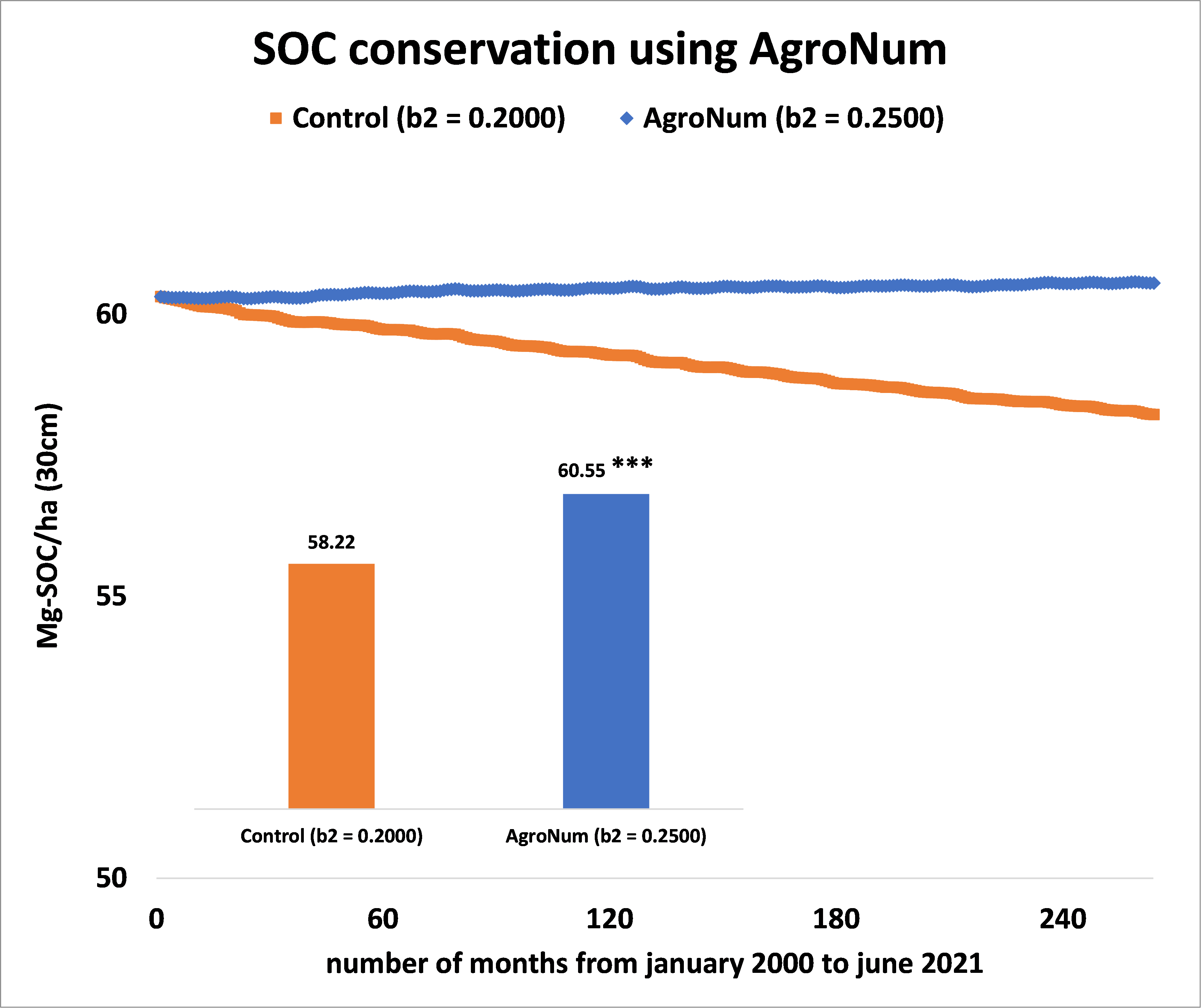Soil organic carbon conservation using Polyor SAS's AgroNum approach (https://lnkd.in/exiTpR5a) to sustainable agriculture? A simple validation using the Roth-C model of carbon turnover in soil.
In a previous post (https://lnkd.in/ed6YJrrx), the benefits of targetng AgroNum recommended grain-N yields was illustrated. This said, this type of illustration, a demonstration in sort, does not fully account for the temporal dynamics of stable soil organic carbon (SOC) or that of the microbial biomass of the soil. To do so, better use a process-based soil organic carbon turnover model such as Roth-C (https://lnkd.in/eJNuf43W), or again its R-language implementation via the SoilR package as proposed by Sierra et al. 2012 (https://lnkd.in/e-4DwKwW).
This involves assumptions regarding the degradability of soil borne crop residues. A 20% increase in the k-coefficients regulating so-called degradable plant matter (k.DPM) and DPM/RPM (degradable to resistant plant material ratio), and a consequent 20% decrease k.HUM limiting humified soil organic matter degradation correspond to a proportional increase of the b2 coefficient in RCN (crop-residue N returned & incorporated to the soil) = a1*N_fertilization^b2. This insures that crop residue carbon is readily incorporated into stable soil organic matter.
The RothC model was run over 22 years & 6 months for which monthly rainfall, average air temperature and open pan evaporation estimates are available via WoldClim™ databases (https://www.worldclim.org/) or again NASA’s LDAS system (https://lnkd.in/et5PKaDm). Basal soil organic carbon and clay contents are also available worldwide via WoSIS’s soil-grids (https://soilgrids.org/). Carbon inptus to soil are derived from non-Fabacea field-grain-protein yields of 3 019 AgroNum™ clients set at NfUEs of approximately 84%.
Over time, ensuring that crop residues returned & incorporated into soil have N-contents attained when grain & residue N-yields are coupled - i.e. when the aforesaid b2 coefficient is equal to b1 as in RDN (grain-N yield) = a1*N_fertilization^b1 at around b1 = b2 = 0.2500, soil organic carbon (SOC) will not decrease (figure). In-fact it will increase (inset) at an apparent rate of approximately 100 kg-SOC/year. Though AgroNum™ does not seek to quantify such increases, this coupling of Roth-C™ to AgroNum™ is a validation of the latter.
Yours to see, since time will tell. (https://lnkd.in/exiTpR5a).
#sustainableagriculture #agriculturedurable #soilconservation #conservationdessols #carbonfarming #eucarbonremoval #soil #sols #fertilisationraisonée



